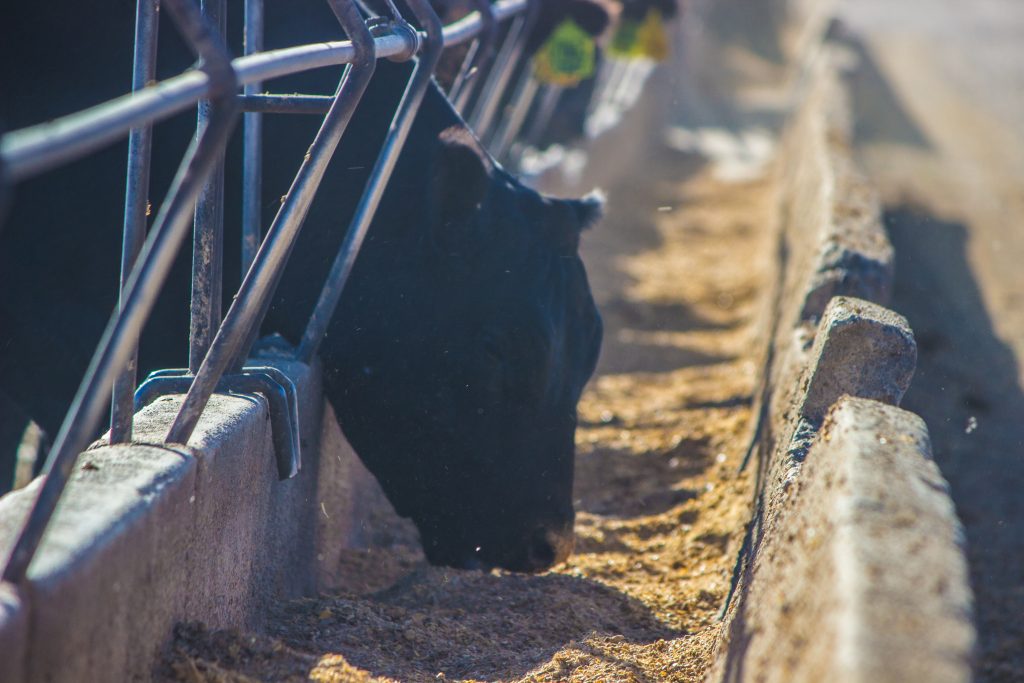Helping end-users troubleshoot technical issues or learn how to best use U.S. coarse grains and co-products is one part of the U.S. Grains Council’s (USGC’s) work around the world. In Mexico, the Council recently helped find an answer to why one of the largest beef producers in Latin America was seeing inconsistent test results on steam-flaked corn and, in the process, helped to maintain sales to this important customer.
“After we successfully administered a program in summer 2020 examining corn quality management in the company’s feed mills, they asked us to address other issues in their feed milling operations related to starch analysis,” said Heidi Bringenberg, USGC assistant director in Mexico. “Thanks to the technical work conducted with the company, they continued to purchase U.S. corn during a difficult import season, which otherwise might not have occurred.”
Mexico is traditionally the largest buyer of U.S. corn, responsible for almost one-third of exports in the 2019/2020 marketing year at nearly 14.5 million metric tons (570 million bushels). Within this market, the Council has worked extensively for decades with the beef feedlot sector to improve feed rations and feeding and management practices.
As this industry has grown, the Council has continued to provide market information and one-on-one technical support. This role as a trusted advisor has remained important as large beef producers shifted their focus to optimizing feeding costs to obtain the maximum gain at the best investment.
Starch is important in steam-rolling operations as it affects nutrient utilization. Both the steam and rolling of the corn kernel allows for easier access to the starch, making it more digestible in both ruminant and monogastric animals and impacting the overall feeding value of both corn and the full ration. A major Mexican beef producer was concerned about varied flake density among steam flakers within a single mill and between feedlots, which caused concerns about the effectiveness of machinery and management.
The Council consulted with a cattle nutritionist to work directly with the company’s technical team on the issue. He analyzed their data to determine why spikes were occurring with the percentage of starch availability.
The standard measurement for starch availability is bushel weight – or the volume of one bushel weight for a given sample of flaked corn. The measurement provides a way to assess flake quality by estimating the starch availability of steamed-flaked corn. The density of bushel weight is influenced by several factors, including type and dimension of flaking equipment, grain type, grain variety, moisture content, roll wear and steam-flaking procedures. As a result, different feed yards and feed mills will show a different percentage of starch availability, making it important to have an accurate and consistent method to measure bushel weight.
The Council’s technical consultant traced differences in the company’s samples to this inconsistent measurement, which caused fluctuations in temperature or time during drying from the time samples were taken in the feed mill or feedlot and when the samples were tested in the lab. As a result, some starch in the steam-flaked corn had an adverse reaction – retrogradation or reassociation with starch molecules that have been separated during gelatinization when the temperature is increased after the corn leaves the rolls in the machine.
The Council took these results back to the company, which is now implementing measures to obtain more accurate sampling and testing of the corn used in their feedlots. New protocols are now in place to help provide more consistent analysis, including measuring bushel density at the feedlot; spreading samples and allowing time to cool before packaging; and drying samples consistently before testing.
“Providing technical education is key to increasing demand in Mexico,” Bringenberg said. “We will continue to work with the beef sector to troubleshoot issues when they arise and more broadly convey the economic and nutritional advantages of U.S. coarse grains and co-products.
About The U.S. Grains Council
The U.S. Grains Council develops export markets for U.S. barley, corn, sorghum and related products including distiller’s dried grains with solubles (DDGS) and ethanol. With full-time presence in 28 locations, the Council operates programs in more than 50 countries and the European Union. The Council believes exports are vital to global economic development and to U.S. agriculture’s profitability. Detailed information about the Council and its programs is online at www.grains.org.

